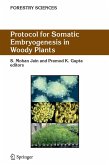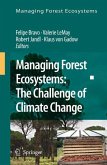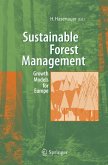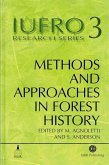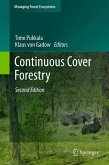This book presents techniques that are relevant to solving operational foresty problems including sampling, spatial analysis, inventory analysis, estimation of future forest conditions and basic methods for common optimization problems.
Forest Analytics with R combines practical, down-to-earth forestry data analysis and solutions to real forest management challenges with state-of-the-art statistical and data-handling functionality. Theauthors adopt a problem-driven approach, in which statistical and mathematical tools are introduced in the context of the forestry problem that they can help to resolve. All the tools are introduced in the context of real forestry datasets, which provide compelling examples of practical applications.The modeling challenges covered within the book include imputation and interpolation for spatial data, fitting probability density functions to tree measurement data using maximum likelihood, fitting allometric functions using both linear and non-linear least-squares regression, and fitting growth models using both linear and non-linear mixed-effects modeling. The coverage also includes deploying andusing forest growth models written in compiled languages, analysis of natural resources and forestry inventory data, and forest estate planning and optimization using linear programming. The book would be ideal for a one-semester class in forest biometrics or applied statistics for natural resources management. The text assumes no programming background, some introductory statistics,and very basic applied mathematics.
Forest Analytics with R combines practical, down-to-earth forestry data analysis and solutions to real forest management challenges with state-of-the-art statistical and data-handling functionality. Theauthors adopt a problem-driven approach, in which statistical and mathematical tools are introduced in the context of the forestry problem that they can help to resolve. All the tools are introduced in the context of real forestry datasets, which provide compelling examples of practical applications.The modeling challenges covered within the book include imputation and interpolation for spatial data, fitting probability density functions to tree measurement data using maximum likelihood, fitting allometric functions using both linear and non-linear least-squares regression, and fitting growth models using both linear and non-linear mixed-effects modeling. The coverage also includes deploying andusing forest growth models written in compiled languages, analysis of natural resources and forestry inventory data, and forest estate planning and optimization using linear programming. The book would be ideal for a one-semester class in forest biometrics or applied statistics for natural resources management. The text assumes no programming background, some introductory statistics,and very basic applied mathematics.
From the reviews:
"The material presented in this text is more than sufficient for a dedicated module of an applied statistics course ... . The authors develop, and demonstrate, solutions to common forestry data handling and analysis challenges ... . Whilst much of the text may be regarded as standard for the topic, the last chapter addresses an area harvest strategy which is well worth reading on its own ... . The text is well written, easy to read and I recommend it to anyone interested in biometrics." (Carl M. O'Brien, International Statistical Review, Vol. 80 (1), 2012)
"The material presented in this text is more than sufficient for a dedicated module of an applied statistics course ... . The authors develop, and demonstrate, solutions to common forestry data handling and analysis challenges ... . Whilst much of the text may be regarded as standard for the topic, the last chapter addresses an area harvest strategy which is well worth reading on its own ... . The text is well written, easy to read and I recommend it to anyone interested in biometrics." (Carl M. O'Brien, International Statistical Review, Vol. 80 (1), 2012)


